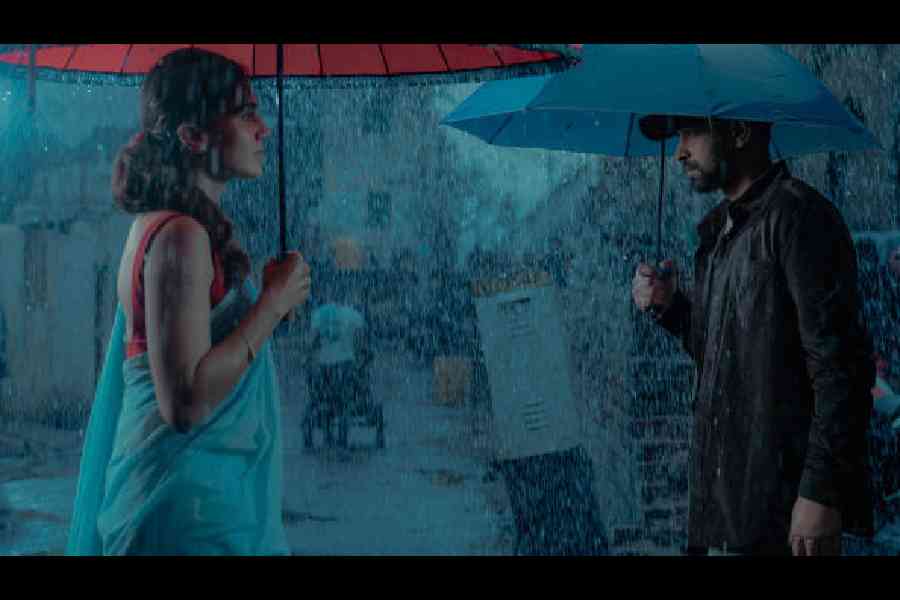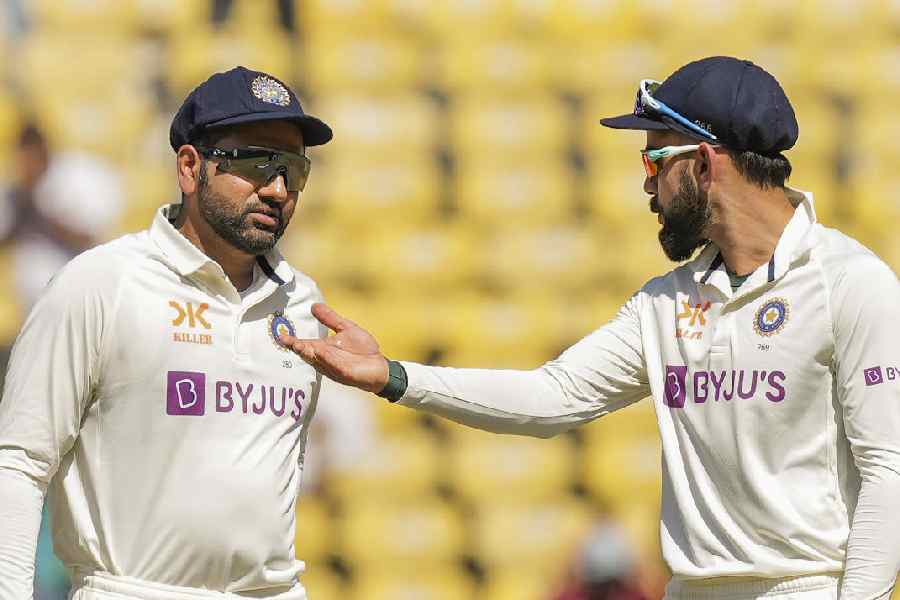Like Rishu’s hand, the winning blend of subtle comedy, quirk and dark intrigue that characterised Haseen Dillruba goes missing in Phir Aayi Hasseen Dillruba. Pardon the not-so-visually-appealing analogy but that is perhaps the only way to describe how vital that concoction was in making Haseen Dillruba a clutter-breaker when it released three years ago.
The story of a seemingly innocuous small-town couple navigating the complexities of an arranged marriage had a certain lightness of being which, when it took a sudden dark turn as murder entered the building, tinged the shock factor with deeper impact. Phir Aayi Hasseen Dillruba — with a couple of spelling changes in its title — has its fair share of WTFs but because you, as the viewer, are now primed to expect the usual suspects in the storytelling of this franchise, the film rarely — save for one or two instances — throws up any plot twists that could count as genuinely shocking.
Kanika Dhillon, who wrote the first film, pens the sequel as well, with Jayprad Desai taking over the directorial reins from Vinil Mathew. The transition — for better or for worse — shows up in more ways than one.
For starters, ‘KIDD’ aka ‘Keep it dark dimwit’ seems to be the operating principle of Phir Aayi Hasseen Dillruba. Having escaped the long arm of the law — pun strongly intended — after murdering Neel (played by Harshvardhan Rane) in the first film and sacrificing his hand in the process, Rishu (Vikrant Massey) finds himself living in the shadows. Both he and Rani (Taapsee Pannu) have relocated to Agra, but live apart to evade the cops. Rani, characterised by her sexy saris, backless blouses and that signature red rose, continues to be a femme fatale, quickly finding an ardent admirer in Abhimanyu (Sunny Kaushal), a local compounder, who is besotted with her.
Rani and Rishu meet under the cover of darkness and when they can’t, they leave passages from pulp fiction writer Dinesh Pandit’s novels of crime and passion on everything from the city’s rain-soaked walls to the body of garbage trucks. After all, it was their mutual obsession for Pandit’s writings — particularly the interestingly named ‘Kasauli ka Qahar’ — that helped them plot an almost perfect cover-up of Neel’s inadvertent murder in the first film.
Planning to escape to another country so that they can live together forever, Rani and Rishu find themselves in a fix when a cop turns up to harass them. What makes it worse is that the case is personal for Montu Paswan (Jimmy Shergill), who happens to be Neel’s uncle. As Montu trains his lens on Rani, she uses Abhimanyu as a pawn, little knowing the dramatic and drastic repercussions of the same. Snakes and crocodiles — quite literally — slither into the picture but eventually it is humans who are found to be the most venomous.
There is a strange sense of deja vu that runs through Phir Aayi Hasseen Dillruba. That is not because of the first film. The sequel, itself, rehashes too many moods and moments within its two-hour-plus running time, with a large part of the film seeming to be fuelled by a one-line idea. The twist in the end, considering we now know the DNA of these films, doesn’t come as a surprise of any sort.
Taapsee continues to hold the franchise together, standing tall even when the film doesn’t. She clearly enjoys playing Rani and that familiar yet fresh vibe and vivaciousness is palpable. Vikrant can always be depended upon to deliver — and he does in a role that strips him off Rishu’s initial innocence — but even a consummate performer like him can’t pull off such a half-baked, unidimensional role.
Sunny Kaushal has an interesting part marred by his limited acting range. Jimmy Shergill, as expected, is solid but perfunctory. Unlike Haseen Dillruba, the music, composed by Sachet-Parampara, is surprisingly unmemorable for a film with strong romantic overtones. In contrast, the soundtrack of the first film remains fresh in our minds, with Phisal ja tu still a part of many a playlist.
Phir Aayi Hasseen Dillruba, true to the beats of the franchise, leaves the door open for a threequel. But the law of diminishing marginal utility seems to be catching up with this one.











